Australian surgeon’s lessons from the Ukraine frontline
ADF surgeon Craig Jurisevic says violence in Ukraine is like nothing he has previously witnessed.
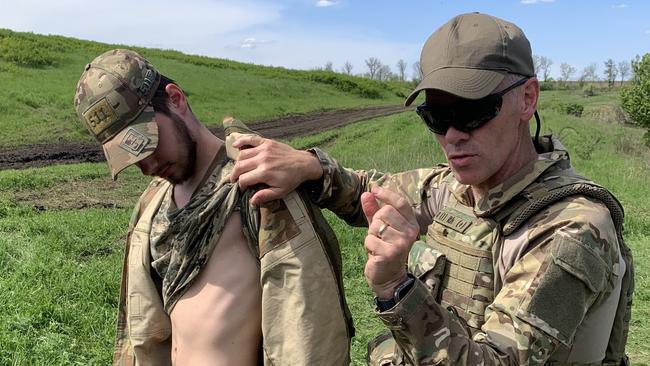
The ailing soldier was retrieved from the frontline and rushed to a military hospital west inside Ukraine for emergency surgery.
He lost both legs, amputated down to stumps high above where his knees had been, and his shattered right arm was amputated at the shoulder. He was unconscious on a ventilator and would only learn his fate when he came to.
“There are things that stay with you. That was certainly one of them,” Adelaide surgeon Craig Jurisevic told The Australian. “I didn’t want to be there when he woke up and found out what had happened. I just didn’t want to see the look on the poor bloke’s face.”
Dr Jurisevic is a married father of three sons who lives a normally quiet life in a middle-class Adelaide suburb.
But over the past 18 months he has divided time between working as a cardiothoracic surgeon at the Royal Adelaide Hospital and making extended trips as a volunteer in Ukraine, training medicos and soldiers in conflict zone trauma surgery and operating on wounded soldiers and civilians.

The 58-year-old has both a medical and military background and has now spent more than six months in Ukraine, from August to October last year and February to May this year leading into the northern spring counteroffensive.
He has a matter-of-fact way of recounting the unfathomable nature of his work. It is unfathomable both in terms of brutality and scale. He said that while Ukraine does not release official figures, unverified reports estimate a daily average of 80 to 100 deaths and 350 to 450 serious injuries, rising to 250 dead and 1000 injured during the heaviest fighting.
Having served as a doctor with the ADF in Afghanistan and East Timor, and done volunteer work in Israel and the former Yugoslavia – his time in Kosovo and Albania chronicled in his book Blood on My Hands: A Surgeon At War – Dr Jurisevic said the violence in Ukraine was like nothing he has previously witnessed.
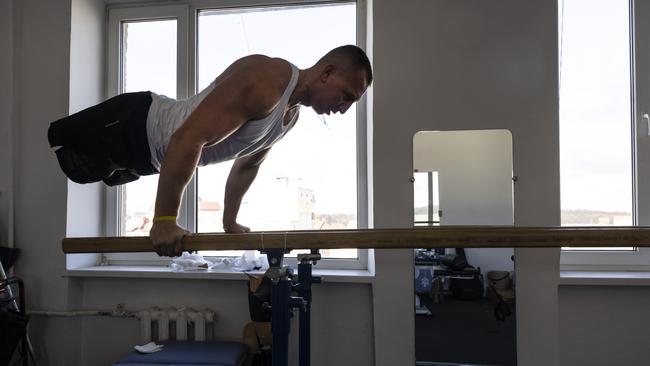
“They’re fighting on a 2000km front and it is all trench warfare, artillery warfare,” he said. “It’s a war of attrition. Most of the injuries are blasts from artillery, missiles, rockets.
“They’re not penetration injuries, they’re blast injuries.
“The casualties people often have are to both legs, a leg and an arm, both limbs and an arm, as well as belly, abdomen, chest, quite a few head and burns injuries. Often all in one.
“The number of really badly injured people is probably worse than in World War II because back then a lot of soldiers died at the front. In Ukraine, we are seeing people who normally would not have survived.”
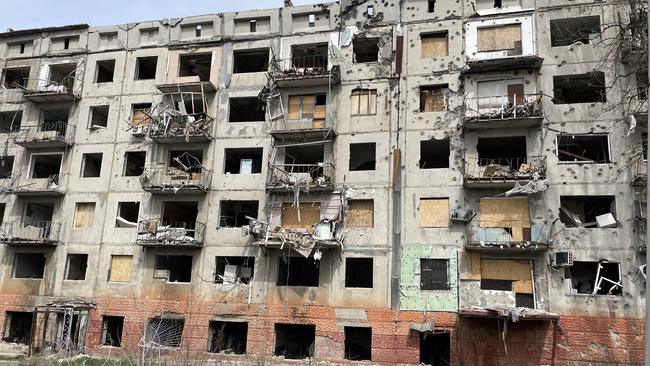
Dr Jurisevic has shunned prior media requests about his experience in Ukraine and is only talking to The Australian for two reasons: to ward against Western indifference towards Russia’s aggression, and to call for Australia and other Western nations to donate armoured purpose-built military ambulances to help the injured Ukrainians.
His account of the vehicles being used sounds like a morbid episode of Top Gear, with the military relying on donated vehicles, some of them two-wheel drives, some of them 20-year-old Pajeros or Transit vans, to use as makeshift ambulances. These often get bogged and need to be towed by military vehicles, taking troops away from the front, and are often attacked by the Russians when they become stuck trying to take soldiers to safety.
“For Australia’s population and the size of our military, we are punching above our weight in terms of our contribution to Ukraine,” Dr Jurisevic said.
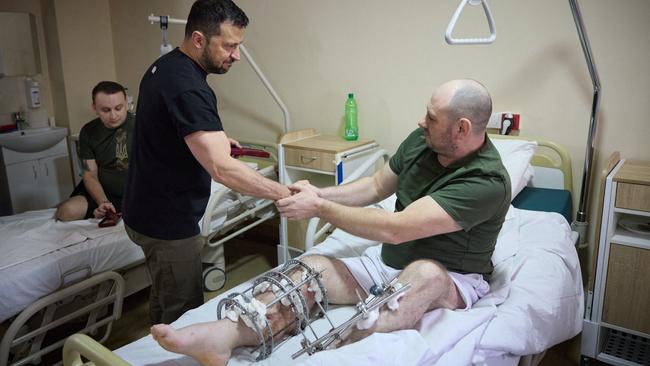
“The Bushmasters we have donated are fantastic, they’re one of the most effective vehicles for protecting the troops. Several were hit while I was there, with no casualties, and it is great that Australia is sending another 70. But the real extra need is for proper, armoured military ambulances.”
The nature of Dr Jurisevic’s work sheds light on the bankruptcy of Russia’s tactics and the determination of the Ukrainian resistance. That work has taken place over four key locations, the riskiest being 1km from the front in Bakhmut teaching “tactical combat casualty care” to frontline medics and soldiers.
“It is different to normal first aid and involves techniques for treating the casualty while under fire and while returning fire,” he explained.
Principles of TCCC include how to stabilise wounded soldiers while working in small tents or underground trench bunkers by putting in IV lines and using lifesaving airway treatment, while also being under artillery or missile attack, but endeavouring to shoot back.
The second stage of work is emergency and damage control surgery 35km from the front in cities such as Druzhkivka, Kramatorsk and Sloviansk, performing life-saving surgery to stop bleeding, amputations, fractures; all performed in missile and drone range with frequent attacks and many near misses.
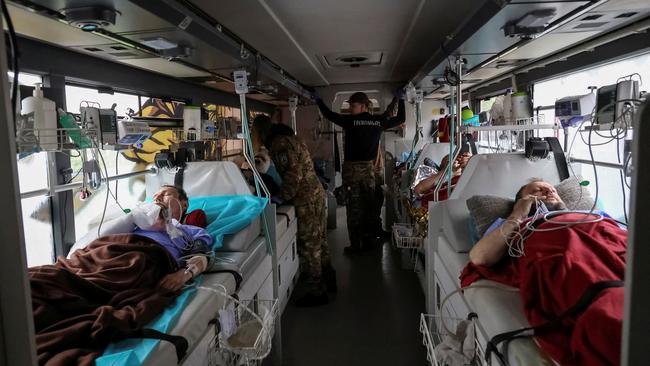
The third stage of work is specialised surgery around 200km from the front in Dnipro in a large hospital with CT scanners and specialist surgical teams, where missile attacks remain frequent but less likely. The fourth stage is reconstructive surgery and rehabilitation at major hospitals in Lviv and Kyiv.
Dr Jurisevic explained that the war has forced innovation with a new frontline method of performing what’s known as REBOA – resuscitative endovascular balloon occlusion of the aorta – to stop the gravely wounded from bleeding out internally. Medicos in the field have managed to stop major bleeding by inserting a catheter through the groin artery, which feeds a balloon up to the aorta and clamps the heart, stopping it from pumping.
Dr Jurisevic has collated the sum of his work into a harrowing PowerPoint presentation he has shown privately to colleagues at the RAH and will share with other surgeons at a conference in New Zealand later this year.
He confidentially showed the presentation to The Australian but cannot make most of its photographs public as they contain identifying geographical markers the Russians use to geolocate the Ukrainian military.
The photographs include damning images of civilians whose legs and torsos had been burned through with white phosphorous, illegal under the Geneva Conventions.
Despite the abysmal human toll of what he has witnessed, Dr Jurisevic is convinced Ukraine will prevail.
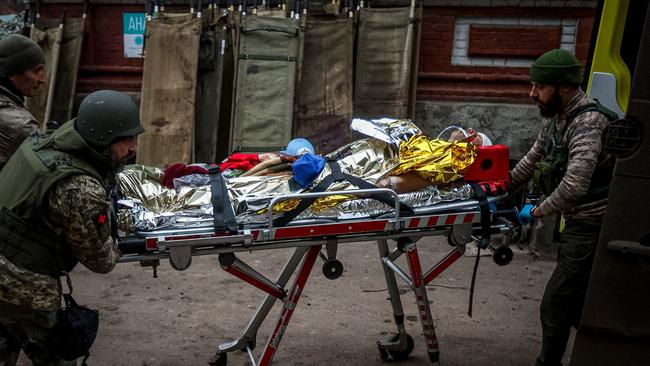
“Training these Ukrainian army units who have no medical background, they picked up skills very quickly,” he said.
“And if they weren’t sure they had picked up those skills to save their mates’ lives they would pin you down until they knew they had acquired those skills … They are extremely motivated.
“The injured soldiers in Ukraine are different from the injured I met in Afghanistan and other places I worked. In one case a young soldier who lost one leg was back at the front six weeks later with a temporary artificial leg helping to fly drones.
“And all these injured soldiers, even with limbs off or horrific injuries, only required a small amount of pain relief compared to what patients normally require. I saw people who had major operations sitting in hospital the next day with almost no pain relief. This is how motivated they are.
“They know they are going to win. They have to win. It’s not a war they chose. It’s a war for their existence.”
As for his own motivation in knowingly entering such a major conflict, Dr Jurisevic said that was the very thing that compelled him to go. “I just believe in helping people, particularly victims of war, and through my experience have become adept at it.”




To join the conversation, please log in. Don't have an account? Register
Join the conversation, you are commenting as Logout